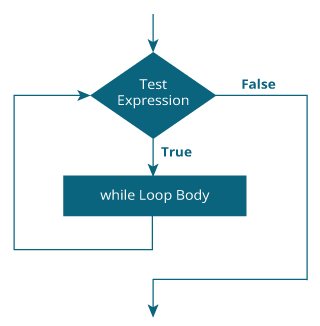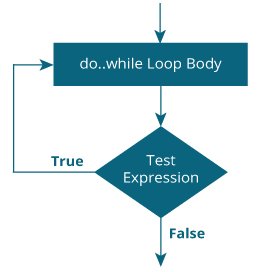Loop is used in programming to repeat a specific block of code until certain condition is met (test expression is false).
Loops are what makes computers interesting machines. Imagine you need to print a sentence 50 times on your screen. Well, you can do it by using print statement 50 times (without using loops). How about you need to print a sentence one million times? You need to use loops.
You will learn about two loops while and do..while in this article with the help of examples.
If you are familiar with while and do...while loops in Java, you are already familiar with these loops in Kotlin as well.
Kotlin while Loop
The syntax of while loop is:
while (testExpression) {
// codes inside body of while loop
}
How while loop works?
The test expression inside the parenthesis is a Boolean expression.
If the test expression is evaluated to true,
- statements inside the while loop are executed.
- then, the test expression is evaluated again.
This process goes on until the test expression is evaluated to false.
If the test expression is evaluated to false,
- while loop is terminated.
Flowchart of while Loop

Example: Kotlin while Loop
// Program to print line 5 times
fun main(args: Array<String>) {
var i = 1
while (i <= 5) {
println("Line $i")
++i
}
}
When you run the program, the output will be:
Line 1 Line 2 Line 3 Line 4 Line 5
Notice, ++i statement inside the while loop. After 5 iterations, variable i will be incremented to 6. Then, the test expression i <= 5 is evaluated to false and the loop terminates.
If the body of loop has only one statement, it's not necessary to use curly braces { }.
Example: Compute sum of Natural Numbers
// Program to compute the sum of natural numbers from 1 to 100.
fun main(args: Array<String>) {
var sum = 0
var i = 100
while (i != 0) {
sum += i // sum = sum + i;
--i
}
println("sum = $sum")
}
When you run the program, the output will be:
sum = 5050
Here, the variable sum is initialized to 0 and i is initialized to 100. In each iteration of while loop, variable sum is assigned sum + i, and the value of i is decreased by 1 until i is equal to 0. For better visualization,
1st iteration: sum = 0+100 = 100, i = 99 2nd iteration: sum = 100+99 = 199, i = 98 3rd iteration: sum = 199+98 = 297, i = 97 ... .. ... ... .. ... 99th iteration: sum = 5047+2 = 5049, i = 1 100th iteration: sum = 5049+1 = 5050, i = 0 (then loop terminates)
To learn more about test expression and how it is evaluated, visit comparison and logical operators.
Kotlin do...while Loop
The do...while loop is similar to while loop with one key difference. The body of do...while loop is executed once before the test expression is checked.
Its syntax is:
do {
// codes inside body of do while loop
} while (testExpression);
How do...while loop works?
The codes inside the body of do construct is executed once (without checking the testExpression). Then, the test expression is checked.
If the test expression is evaluated to true, codes inside the body of the loop are executed, and test expression is evaluated again. This process goes on until the test expression is evaluated to false.
When the test expression is evaluated to false, do..while loop terminates.
Flowchart of do...while Loop

Example: Kotlin do...while Loop
The program below calculates the sum of numbers entered by the user until user enters 0.
To take input from the user, readline() function is used. Recommended Reading: Kotlin Basic Input
fun main(args: Array<String>) {
var sum: Int = 0
var input: String
do {
print("Enter an integer: ")
input = readLine()!!
sum += input.toInt()
} while (input != "0")
println("sum = $sum")
}
When you run the program, the output will be something like:
Enter an integer: 4 Enter an integer: 3 Enter an integer: 2 Enter an integer: -6 Enter an integer: 0 sum = 3